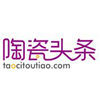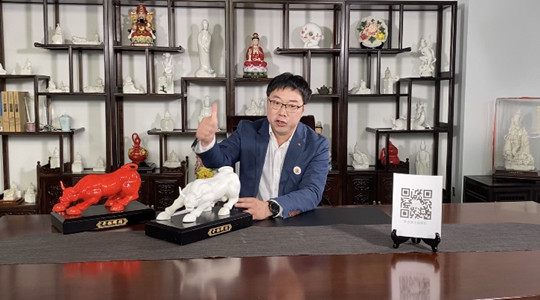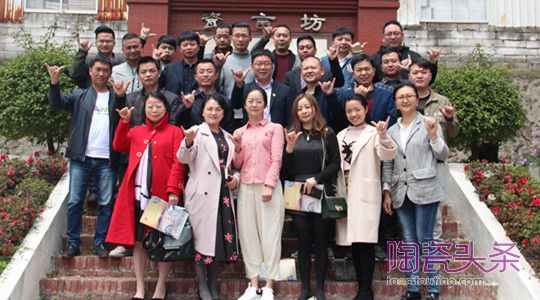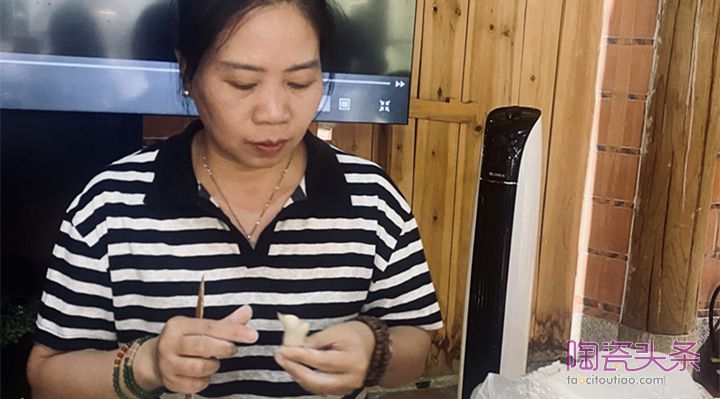外國人眼中的“中國白”|考古眼光中的“中國白” (三)——何翠媚

-
小陶陶
2021-09-13 08:37:46 德化陶瓷文化研究院、陶瓷辦1145
13810
編者按:
由柯玫瑰(Rose Kerr)、約翰?蓋爾(John Ayers)所著《——德化白瓷》(Blanc de Chine—porcelain from Dehua)于2002年經新加坡亞洲文明博物館出版,是繼唐納利《——福建德化瓷》之后的一本專門研究德化白瓷的專著,影響甚為深遠。
該書收錄的都為國外研究德化白瓷的知名學者所撰寫德化白瓷研究資料。包括柯玫瑰的“德化器物款識介紹”,海蒂(Heidi Tan)的“鑒賞家探訪”,約翰?蓋爾的“的影響”,何翠媚(Chuimei Ho)的“考古眼光中的”,郭勒遜(Kenson Kwok)的“德化雕塑結構的一點看法”, 埃娃?施特勒伯(Eva Strober)的“德累斯頓的斯特朗大帝收藏的德化瓷”,以及附錄介紹等七個部分,從不同角度介紹了德化白瓷。與此同時,該書收錄的160件德化窯精品,為Hickley家藏,后捐贈給新加坡亞洲文明博物館,是了解、品鑒、研究德化白瓷不可多得的藝術精品。
本欄目將定期精選出相關代表性文章進行翻譯,以饗讀者。然而,由于作者水平的局限,翻譯過程中難免有所錯漏,不足之處敬請各位讀者提出寶貴意見。
Blanc de Chine in archaeological perspective: a tribute to Donnelly by Chuimei Ho
(翻譯:孫延燕)
Distribution
Donnelly dates the earliest blanc de Chine ware to sometime in the beginning of the sixteenth century, an assumption which has not met any challenge. He also suggests that regular export of blanc de Chine only started around AD 1650.Recent archaeological data does not dispute this view. What is important is that through the study of blanc de Chine ware, one can say that the ware took 150 years to mature from an experimental ware -White Ware I-and another 150 years to become marketable in Europe as blanc de Chine ware.
分配
唐納利將最早的瓷器追溯到16世紀初的某個時候,這個假設沒有遇到任何挑戰。他還指出,經常性的出口始于公元1650年左右。最近的考古資料并不否認這一觀點。重要的是,通過對瓷的研究,我們可以說,瓷從實驗性的白瓷(白瓷1號)到成熟需要150年的時間,而又用了150年的時間才讓名揚歐洲。
Why it took the Dehua potters so long to expand their market is beyond the scope of this paper. Neither do we have the space to discuss the type of domestic clientele for blanc de Chine wares. The few datable pieces prior to 1650 must have been in Chinese hands at one time, even though the their original owners may never be known.
德化陶工為什么要花這么長時間來開拓市場,這超出了本文的討論范圍。我們也沒有空間討論產品的國內客戶類型。1650年以前的少數幾件可供查閱的文物肯定曾經在中國人手中,盡管它們的原始主人可能永遠不為人所知。
On the whole, not too many pieces of seventeenth-century blanc de Chine have been found in European holdings. Dutch East Indies Company trading ships such as the Oosterland carried limited quantities of blanc de Chine. In 1697 when the Oosterland went down in Table Bay near Cape Town, it carried a Guanyin figure, a cup and a small bowl as well as a pair of incense stick holders in the shape of lions-the type made at Lingdou. Even though final reports on the cargo are still to be published, underwa ter archaeologists are convinced that the few Asian ceramics did not represent the regular cargo. Instead, the Asian ceramics on board were probably smuggled by the crew, since the last few years of the seventeenth century were not a good time for the Company's ceramic trade.
總的來說,在歐洲的藏品中發現的十七世紀并不多。荷蘭東印度群島公司的貿易船,如“奧斯特蘭”號,裝載了有限數量的瓷器。1697年,當奧斯特蘭號在開普敦附近的桌灣沉沒時,它裝載了那種嶺兜窯才有類型:一個觀音像、一個杯子和一個小碗以及一對獅子形狀的香燭架。盡管關于這些貨物的最終報告仍有待發表,但考古學家們確信,為數不多的亞洲陶瓷并不具有代表性。相反,船上的亞洲陶瓷可能是船員走私的,因為17世紀的最后幾年對公司的陶瓷貿易來說不是一個好時機。
The Dutch were not alone in bringing blanc de Chine to the Europeans. The Spanish, through their regular Manila-Acapulco sea route, brought blanc de Chine cups to Mexico City: Fragments of an elegant cup with applique plum flowers were recovered from Spanish colonial stratum of Templo Mayor, dated to the late seventeenth century. An intact example with added Mexican silver mount and cover speaks for appreciation of blanc de Chine held by Mexicans. By and large, seventeenth-century blanc de Chine pieces are rare in Europe and the Americas.
荷蘭人并不是唯一一個把帶到歐洲的人。西班牙人,通過他們的馬尼拉-阿卡普爾科航線,把瓷杯帶到墨西哥城。17世紀晚期,從西班牙殖民的大神廟那里發現了一個帶有梅花貼花的精致杯子的碎片。一個完整加上了墨西哥銀座和蓋子的杯子,說明了墨西哥人對他們持有的瓷的欣賞。總的來說,十七世紀的在歐洲和美洲很少見。
There is a strong possibility that Augustus the Strong was responsible for popularizing blanc de Chine among Europeans. The 400-piece collection in Dresden was started by the king in the early eighteenth century. No doubt it was the beauty and superb technology of blanc de Chine porcelain that intrigued the German elite and inspired them to buy. But why were duplicates bought in such bulk? The Dresden Inventory shows that, in addition to sets of tableware, in 1721 and 1722 the king bought 12 monkeys, 14 bottles, 18 dogs and 10 dolls. Even though price was an unlikely factor in the kings shopping, it remains a possibility that blanc de Chine was good value compared with other contemporary Asian ceramics. We learn from the excellent records ofthe merchant Lazarus Duvaux that the taste for blanc de Chine had spread to France during the mid-eighteenth century. In 1748, Frenchmen were willing to pay 7 pounds 16 shillings sterling for a pair of blanc de Chine lions. However, a similar pair of lions in mottled blue-and-white glaze from Jingdezhen cost 60 pounds. Apparently Dehua potters priced their products competitively.
很有可能是奧古斯都在歐洲人中推廣了瓷器。德累斯頓的400件藏品是國王在18世紀早期開始收藏的。毫無疑問,正是瓷器的美麗和高超的工藝吸引了德國精英,激發了他們的購買欲。但為什么要大量購買復制品呢?德累斯頓的庫存顯示,除了成套餐具外,在1721年和1722年,國王還購買了12只猴子、14瓶、18只狗和10個洋娃娃,盡管價格不太可能成為國王購物的一個因素,但與其他當代亞洲陶瓷相比,瓷器具有很高價值的可能性仍然存在。我們從商人拉扎魯斯·杜沃的記錄中了解到,18世紀中葉,人們對的喜愛已經蔓延到了法國。1748年,法國人愿意花7英鎊16先令買一對獅子。然而,一對來自景德鎮的類似的藍白相間的獅子花了60英鎊,顯然德化陶工的產品價格很有競爭力。
責任編輯:陳美珠
















